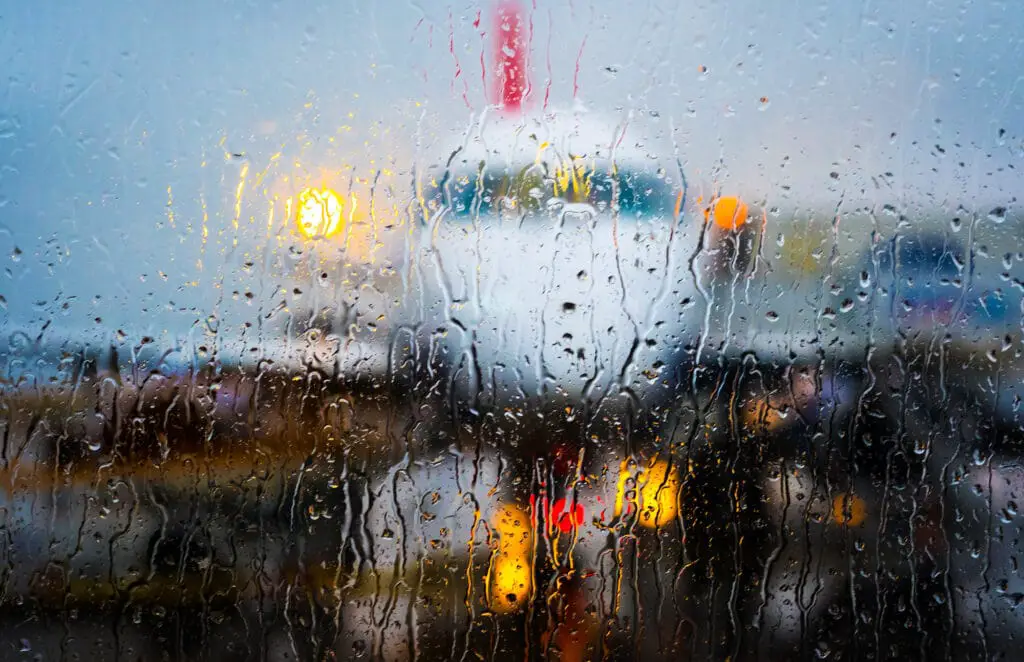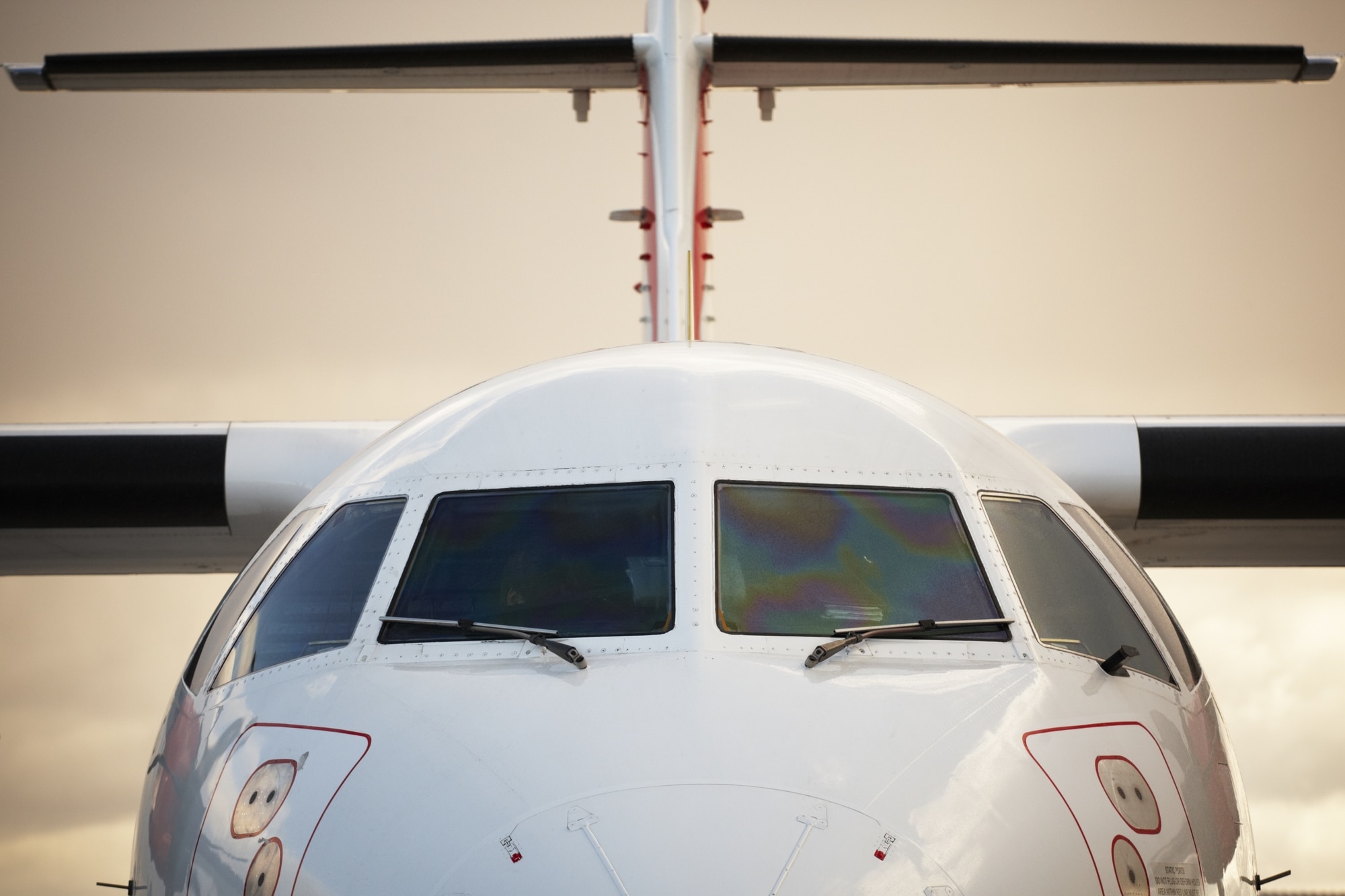Cars use windshield wipers to keep the rain off the glass so drivers can see and drive safely. But sometimes planes have to fly through rain too, and the pilots may have difficulty seeing in the rain.
So do airplanes have windshield wipers?
Many planes, but not all, have windshield wipers. It is usually larger commercial planes that have windshield wipers.
Smaller, private, and military planes usually don’t have windshield wipers. They don’t have them because the plane’s propeller will keep rain from accumulating on the windshield, or the planes go fast enough that the rain comes right off the windshield.
If a plane has windshield wipers, there will usually be a set on the pilot’s and co-pilot’s side. If one stops working, the other windshield wipers will still work to ensure the pilots can see out of the plane.
Oftentimes, pilots use the windshield wipers on a plane during takeoff or landing, but not as much during the actual flight.
And the windshield wipers on a plane tend to be quite small compared to the size of the window itself. So, even when the wipers are on, there is only a small part of the windshield that the wipers will clear of rain to see through.
This article explains the different types of airplane windshield wipers, the parts of plane windshield wipers, and the other ways to remove rain from an airplane. Then, we explain whether or not 747s have windshield wipers and whether or not rain causes turbulence.
Table of Contents
The Parts of a Plane’s Windshield Wipers
The windshield wipers on a plane have many parts other than the actual wipers.
Here are the parts you will find in a plane’s windshield wiper system:
- Wiper blade
- Wiper arm
- Blade nut
- Serrated disk
- Sill beam
- Arm attach bolt
- Serrated adjustment sleeve
- Motor-convertor
- Convertor shaft
There is also a switch or button in the cockpit which turns the windshield wipers on. This switch usually has multiple speed options depending on the intensity of the rain and how important the visibility is, like during landing.
The problem with having so many parts in the windshield wiper is that if one breaks, the entire wiper system will not work.
However, planes do have other methods for keeping the windshield clear of rain, which pilots may use with windshield wipers.
Other Methods to Remove Rain from an Airplane

Other than windshield wipers, there are a few other methods that pilots use to remove rain from an airplane.
First, pilots can put chemical rain repellent on the windshield to keep rain and water from staying on the glass.
The chemicals do not mix with water. So when the rain comes into contact with the repellant on the windshield, they bead up and roll off the windshield instead of staying on it and preventing the pilots from being able to see through it.
The pilot can use a button or switch in the cockpit to add the chemicals to the windshield whenever they need it.
Another method is to use hydrophobic seal coating, which works similarly to the chemical repellant. But, instead of being applied by the pilot as necessary, the coating is applied pre-flight, and it will last for a much longer time over multiple flights before having to be reapplied.
Finally, the pneumatic rain removal system is often used in conjunction with windshield wipers. This system heats up the windshield by blowing hot air on it, which helps in two ways.
First, the heat keeps the rain from freezing on the windshield and causing more visibility issues for the pilots. And second, it breaks down water droplets and makes them easier for the windshield wipers to blow away.
To learn more about the parts of a plane and how they work, check out the reasoning behind the name cockpit, aka the front of the plane.
Types of Aircraft Windshield Wipers
The most common types of aircraft windshield wipers are electric. These can be turned on or off easily from the cockpit, and on some larger planes, the pilot and co-pilot have their own windshield wiper control systems.
However, some planes, usually smaller ones, have hydraulic windshield wipers. These wipers are less common because they require more maintenance and must be checked often.
You May Also Like: How Hot Do Aircraft Brakes Get?
Do 747 Planes Have Wipers?
Many 747s do have wipers, but not all of them. Some of the newest 747s are built without the wipers and instead use the methods discussed above to remove rain from the windshield. But, if you are in an older 747, you may notice that it has wipers.
Can Rain Cause Turbulence?
Rain is one of the most common causes of turbulence, and if you fly through a storm, you can expect to have at least a little turbulence.
Here is what Peter Greenberg, travel broadcaster, says about why turbulence happens during rain.
If you are flying during a storm or extremely cloudy weather, then your chances of flying through some turbulence is high. Storms and cloudy weather can create different air pressure, which creates winds moving in different directions, leading to turbulence.
So, the more rain you have to fly through on a flight, the more turbulence you can expect during the flight because of the air pressure.
If it’s raining, either when you head to the airport or at your destination, you may want to have an umbrella with you. But, can you take an umbrella on a plane?

